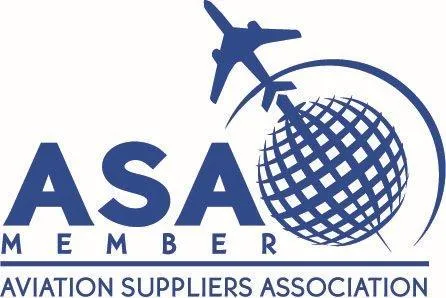
Unmasking Unapproved Aircraft Parts: Industry Failures and Fixes
The aviation industry depends on a zero-tolerance approach to safety, reliability, and compliance. Every aircraft must be built, maintained, and operated using approved components with verifiable traceability throughout its lifecycle. Despite rigorous regulations, unapproved aircraft parts continue to infiltrate the global supply chain, posing severe risks to safety and operational integrity. Recent scandals have revealed alarming gaps in the industry’s verification of the legitimacy of aircraft parts and documentation.
Regulatory authorities, airlines, lessors, and MRO providers face increasing pressure to close these gaps before failures lead to catastrophic outcomes. Understanding how these parts enter service and how the industry can mitigate future risks is now an urgent priority.
How Unapproved Aircraft Parts Enter the Aviation Supply Chain
Aircraft parts enter the supply chain through multiple channels, including OEMs, authorized distributors, surplus dealers, and independent brokers when supply chains are under pressure—whether from production delays, global shortages, or financial constraints—operators may turn to secondary markets for faster sourcing.
Unfortunately, these secondary markets are where unapproved, counterfeit, or misrepresented parts frequently emerge. Parts lacking proper certification or with forged documentation can slip past buyers when verification processes rely heavily on paper records.
In the case of the AOG Technics scandal, falsified Authorized Release Certificates (ARCs) accompanied engine components that were neither repaired nor inspected by approved facilities. This deception allowed fraudulent parts to bypass standard checks and reach commercial operators worldwide.
According to the findings, over 120 aircraft globally were affected by parts linked to falsified records in 2023 alone. Airlines were forced to conduct emergency inspections, ground aircraft, and replace suspect components at significant operational costs.
One common entry point for unapproved aircraft parts is during asset transitions: when aircraft change hands between lessors and operators. Without complete birth-to-birth documentation, it becomes difficult to confirm whether a component is genuine and compliant. The problem intensifies when fragmented recordkeeping systems cannot trace a part’s complete history.
The absence of a standardized null.
The Safety Risks of Unapproved Aircraft Parts
The presence of unapproved aircraft parts introduces a wide range of safety risks that cannot be mitigated solely through inspection. While some counterfeit components may visually match approved parts, they often fail to meet critical performance standards related to fatigue resistance, material strength, and dimensional tolerances. An undetected substandard component can lead to system failures, in-flight emergencies, or even catastrophic accidents.
A 2024 report linked unapproved components to at least nine major mechanical failures over the past 24 months. One notable incident involved an unapproved hydraulic pump that failed mid-flight, forcing an emergency landing. Further investigation revealed the pump had been installed using forged documentation that misrepresented its overhaul status.
In addition to mechanical risks, the use of unapproved aircraft parts undermines the reliability of predictive maintenance programs. Aircraft health monitoring systems rely on accurate data about part lifecycles to forecast maintenance needs and avoid unscheduled failures. When a part’s history is falsified, those systems cannot provide accurate predictions, leading to either premature failures or unnecessary maintenance costs.
Passenger safety and operational trust are compromised when airlines are forced to disclose that critical components are non-compliant. The reputational damage extends beyond carriers to the broader aviation industry, which depends on public confidence in its safety standards.
The Financial and Operational Impact of Unapproved Parts
Beyond safety concerns, the financial consequences of unapproved aircraft parts are significant and far-reaching. Airlines affected by the AOG Technics scandal reported millions in direct costs related to emergency inspections, replacement parts, and flight cancellations.
Asset valuations suffer when aircraft cannot present full back-to-birth traceability for installed components. Lessors may reject aircraft returns or impose costly end-of-lease penalties if documentation fails to meet compliance standards.
MRO providers also face operational setbacks when they must allocate resources to investigate part authenticity rather than perform scheduled maintenance. Additionally, legal liabilities emerge when disputes arise between operators, lessors, insurers, and maintenance providers over responsibility for unapproved aircraft parts discovered after installation.
The complexity of global supply chains makes resolving these issues both time-consuming and expensive. Each suspect part requires verification through teardown inspections, destructive testing, or cross-referencing multiple sources of fragmented documentation.
Why Current Verification Processes Fail
Traditional verification processes rely heavily on manual checks of paper-based or scanned documentation. These methods are vulnerable to human error, document forgery, and inconsistent record-keeping practices across operators, lessors, and MRO facilities. In an industry where thousands of parts transition between operators over an aircraft’s lifespan, fragmented documentation becomes a primary point of failure.
One critical vulnerability involves the lack of standardization in how maintenance records, release certificates, and parts histories undergo documentation. Without a universally accepted digital standard, records are often within disparate systems that cannot communicate with one another. A 2025 survey by Aviation Week found that 41% of MROs reported challenges in verifying component traceability due to incompatible or missing records.
When maintenance teams receive parts, they often rely on the authenticity of attached ARCs or EASA Form 1s, but lack access to centralized databases for verification. Fraudulent suppliers exploit this trust by creating forged certificates that appear legitimate but lack backing from approved facilities. Once installed, discovering an unapproved part typically requires either a triggered audit or a failure event.
The failure of verification is further compounded during periods of supply chain stress. In times of high demand, operators may prioritize speed over exhaustive documentation reviews, unintentionally increasing exposure to counterfeit risks. Until verification processes evolve, the industry remains vulnerable to recurring incidents involving unapproved aircraft parts.
The Future of Traceability for Aircraft Parts
The path forward requires a fundamental shift from paper-based systems to fully digitized, end-to-end traceability solutions. Aircraft parts should be traceable through every stage of their lifecycle, from manufacturing and repair to installation and retirement. Secure digital documentation, backed by verification technologies such as blockchain and AI-driven anomaly detection, provides the aviation industry with its best defense against counterfeit components.
Adopting centralized digital platforms allows operators, lessors, and MROs to instantly verify the authenticity of any component based on immutable records. In addition to preventing fraud, these systems streamline audits, accelerate lease transitions, and optimize maintenance planning.
A major benefit of digitized traceability is the ability to automate document validation, flag inconsistencies, and provide real-time alerts when a component does not meet certification requirements. Maintenance teams no longer need to manually sift through decades of scanned PDFs or paper files to verify a part’s legitimacy. Instead, they gain instant access to comprehensive, verified histories.
Industry regulators are increasingly signaling that mandatory digital traceability may become the standard in the years to come. As the consequences of using unapproved aircraft parts become more apparent, the case for proactive investment in robust documentation systems becomes increasingly undeniable.
Protect Your Fleet With Verified Aircraft Parts
Unapproved aircraft parts continue to pose a threat to safety, compliance, and operational efficiency across the aviation industry. ProvenAir provides a comprehensive, automated digital traceability solution that safeguards your fleet with verified, back-to-birth documentation. Our platform accelerates maintenance, streamlines audits, and prevents counterfeit risks before they impact your operations. Learn more about how ProvenAir protects your assets by talking to us today.


